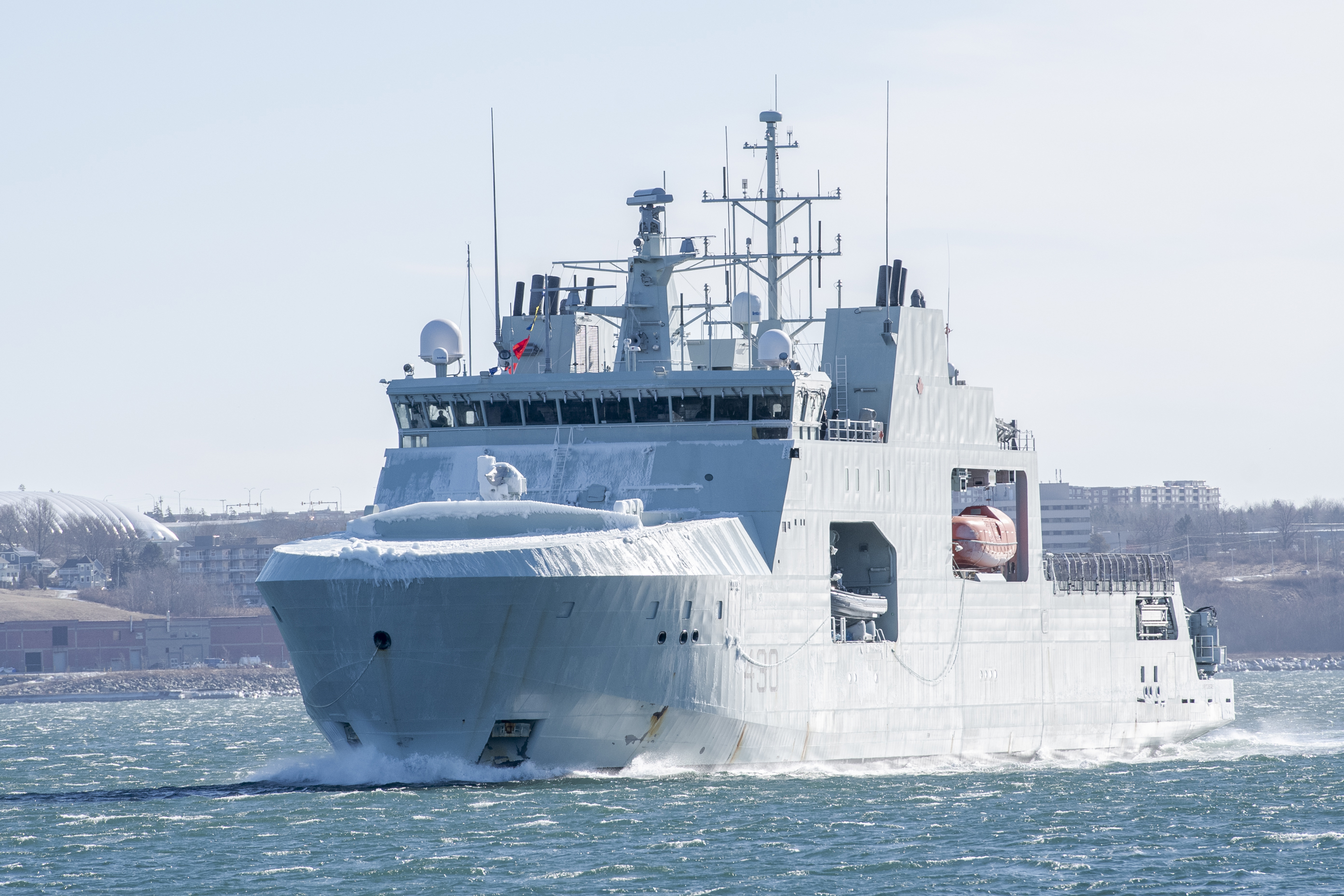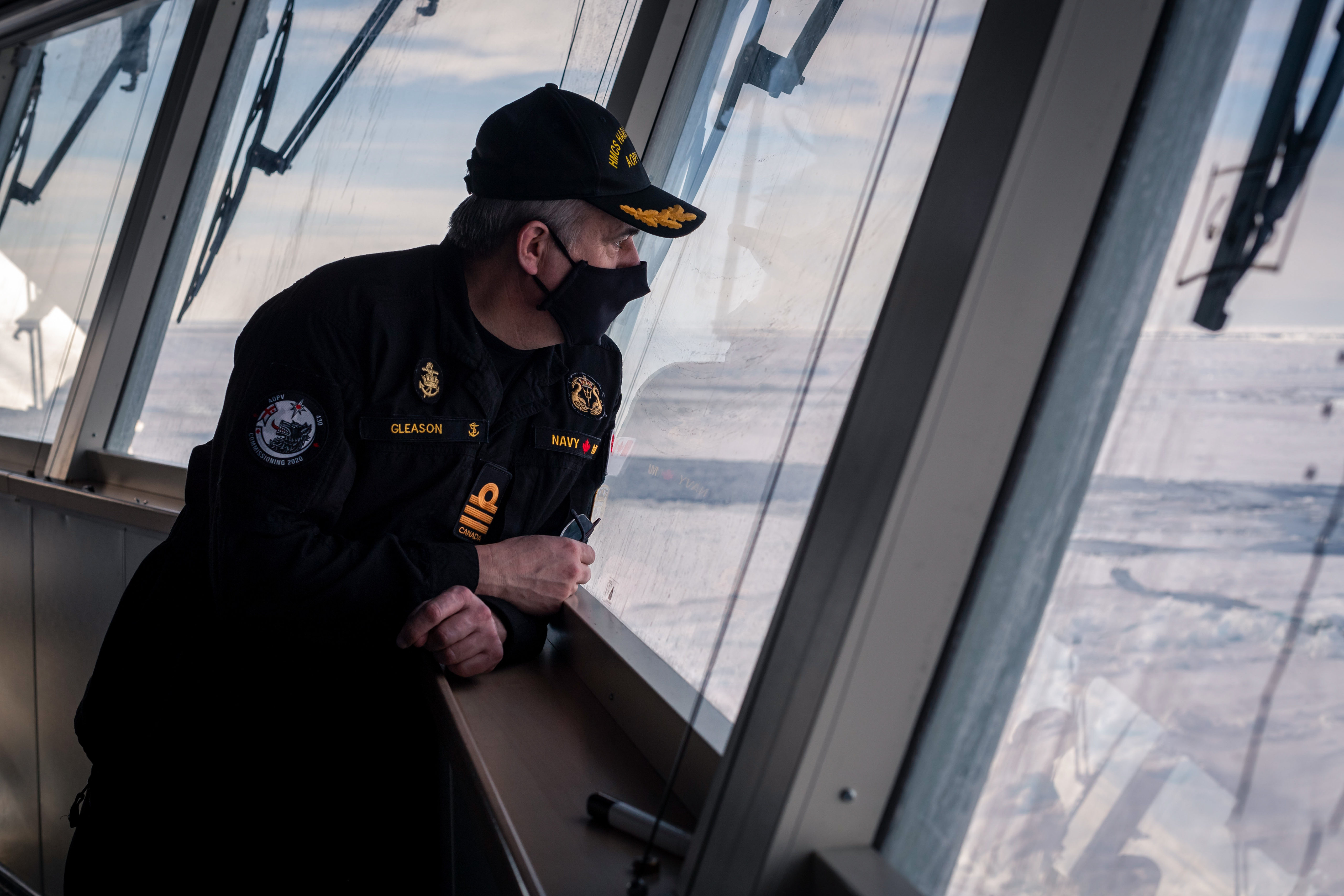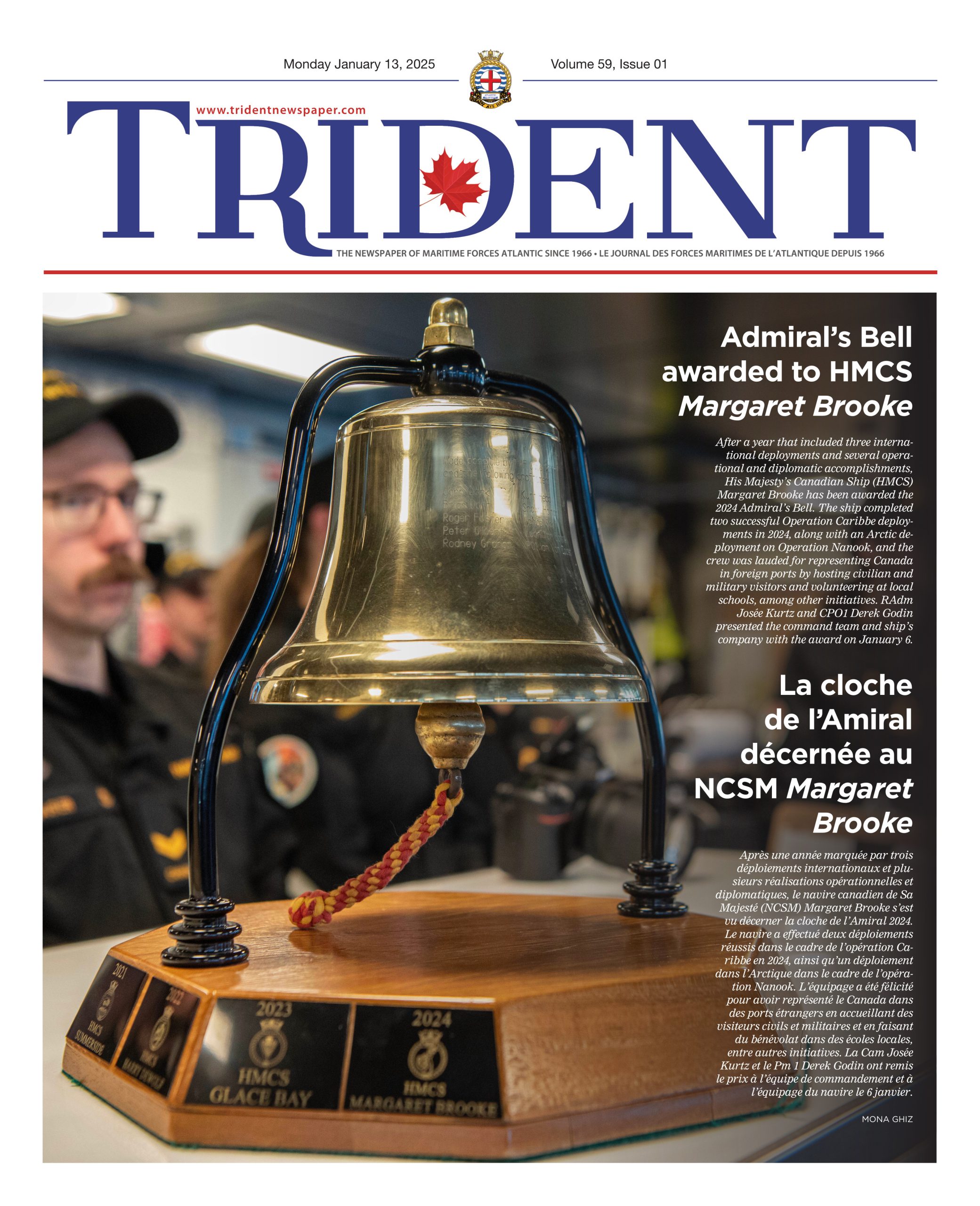
CPL DAVID VELDMAN, FORMATION IMAGING SERVICES
Hard work paying off – HMCS Harry DeWolf excels through ice trials
By Ryan Melanson,
Trident Staff
Navigating the Arctic and sailing through ice is nothing new for Cdr Corey Gleason. As the first Commanding Officer of the Navy’s first Arctic and Offshore Patrol Ship, he’s spent years preparing and training, going North with Canadian Coast Guard ships and NATO allies to gain experience, along with plenty of academic study.

CPL DAVID VELDMAN, FORMATION IMAGING SERVICES
None of this dulled the excitement, however, of reaching sea ice in Labrador for the first time with HMCS Harry DeWolf.
“I felt a rush of years of mentorship and training,” he said, noting the pride he felt in confirming his crew was ready and prepared to charge the ship through ice.
“There is nothing like doing the work practically; the noise of ice striking the hull, the feeling of the ship riding off of an ice floe and falling into a new lead, or the sounds of alarms going off from different sensors. For me personally, it is always fun to see the expressions on the faces of sailors who encounter ice breaking for the first time,” Cdr Gleason added. Reactions ranged from shock at the impact, as sailors grabbed chairs or cabinets for balance, to joy and high fives at seeing the payoff after years of work.
Harry DeWolf left Halifax on February 9 and spent nearly a month conducting cold weather and ice trials off the coasts of Northern Labrador and Nunavut. They were joined by Irving Shipbuilding staff and other civilian contractors as the ship moves through the final steps before commissioning later this year.
Also on board were members of the future HMCS Margaret Brooke, who have the advantage of being able to familiarize themselves with the new platform ahead of the second ship in class being delivered to the Navy. Cdr Gleason said his team shared lessons learned so far, and focused on creating professional development opportunities for their colleagues, with practical exposure to the ship’s propulsion and control systems and other pieces of equipment on board, and with practice in handling the ship through sheets of ice thicker than 15 centimetres.
“It shouldn’t be lost on anyone that this was a very big deal for any ship, and not just the RCN, to be this far north at this time of year,” Cdr Gleason said, noting the ship’s winterization worked as intended in -40C weather, and that the speed and power delivered above expectations in Harry DeWolf’s first runs through real ice.
“We will not be hampered in any way when operating during the routine navigable season from July to October.”





